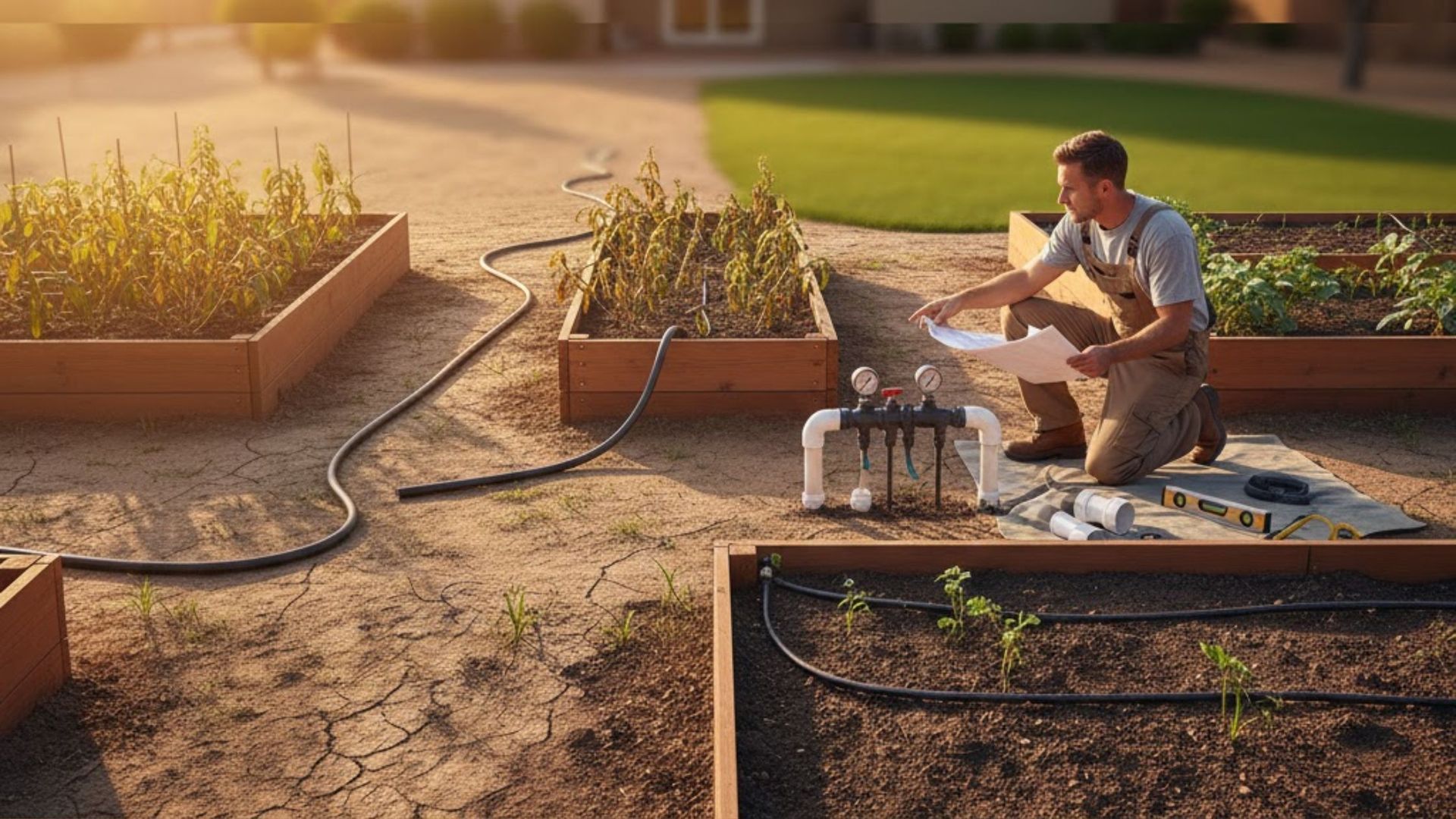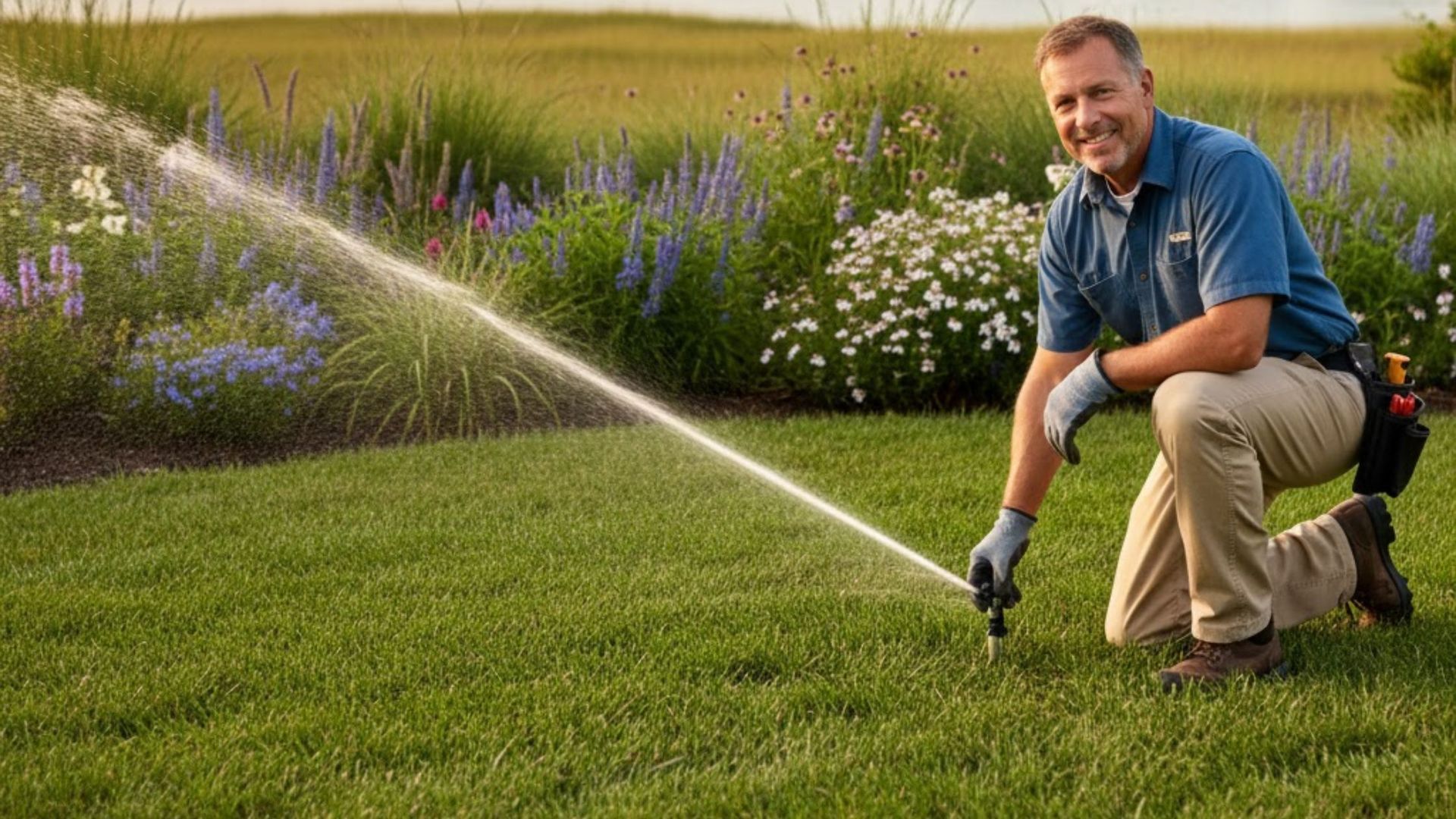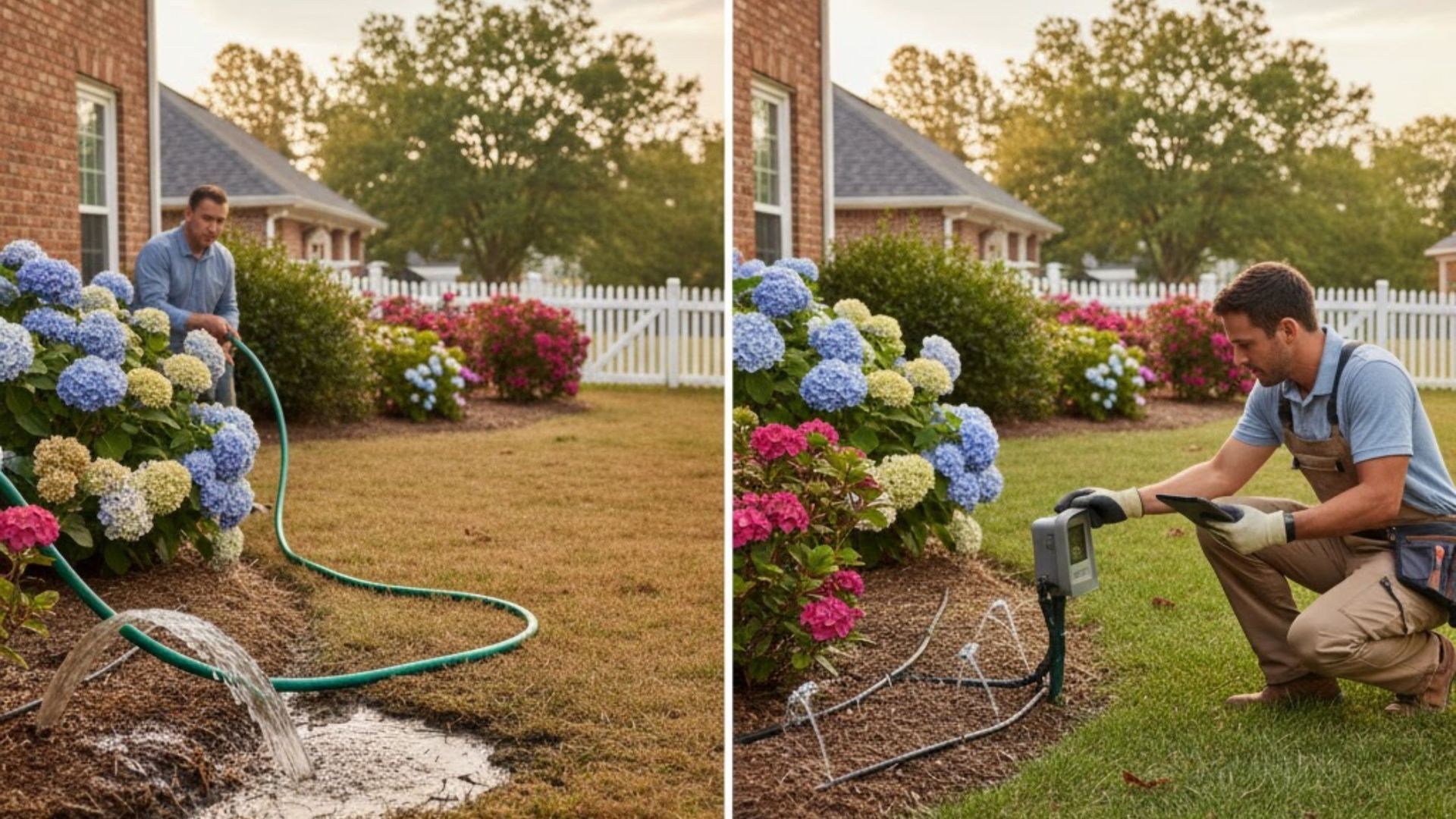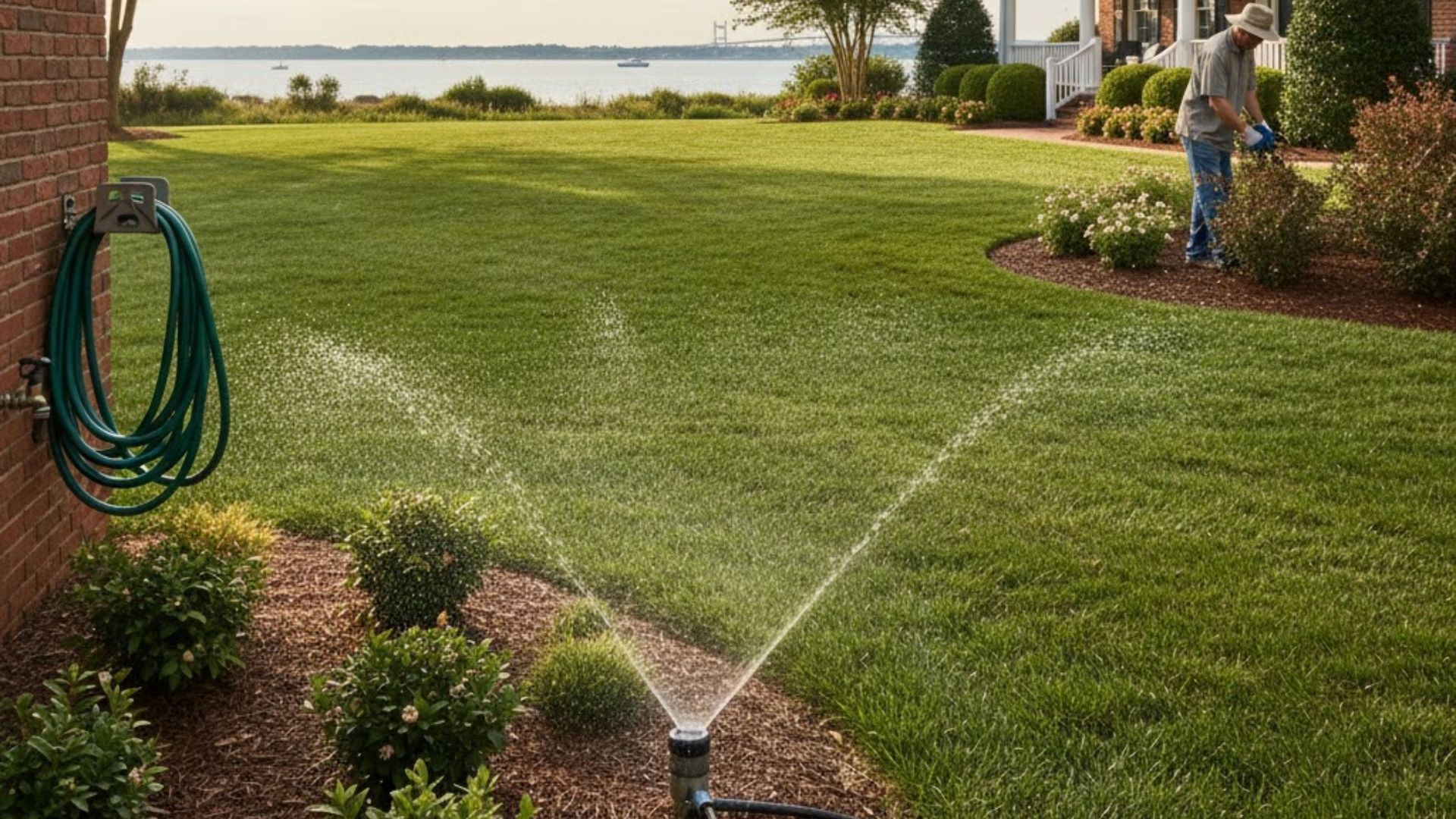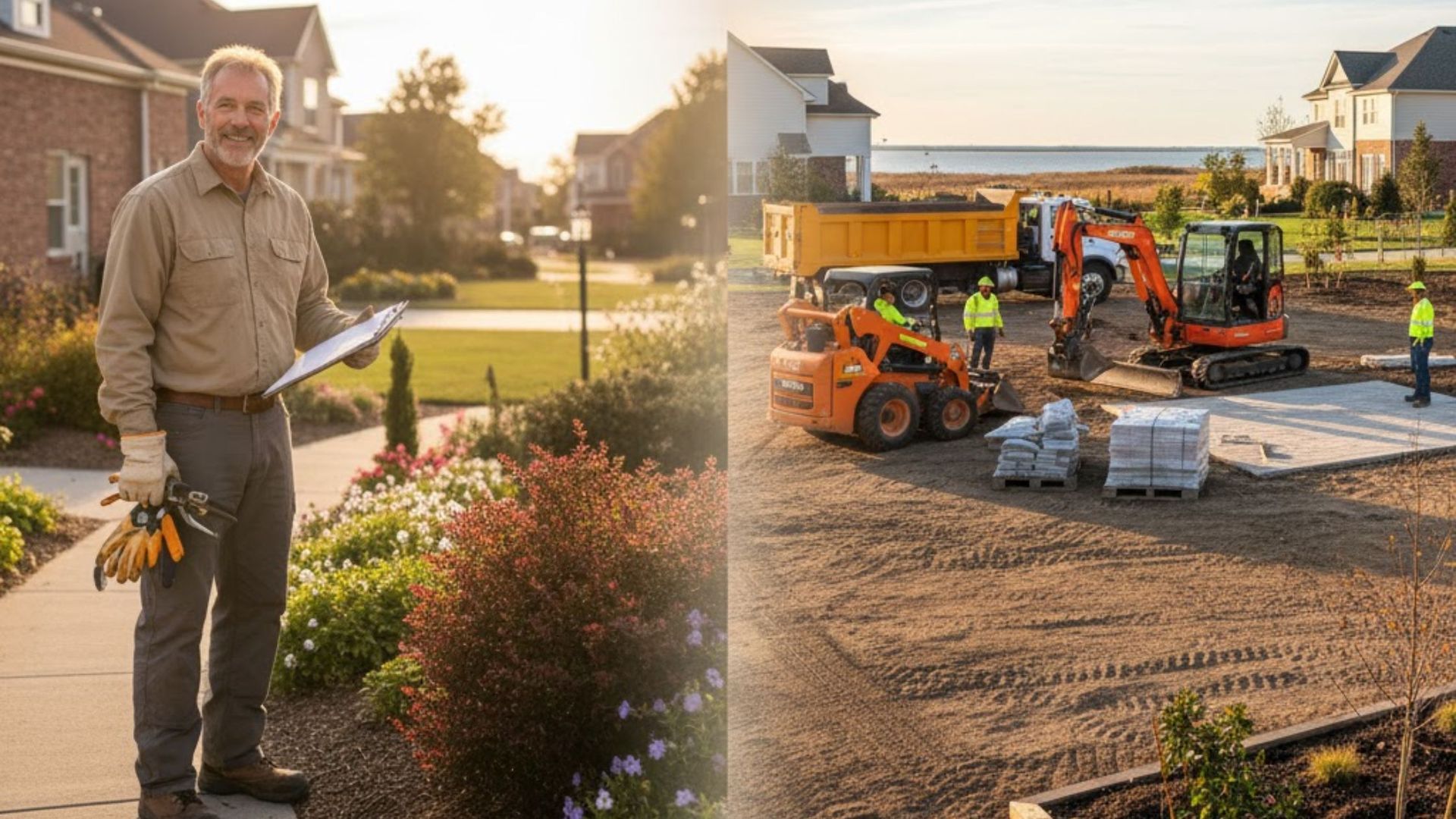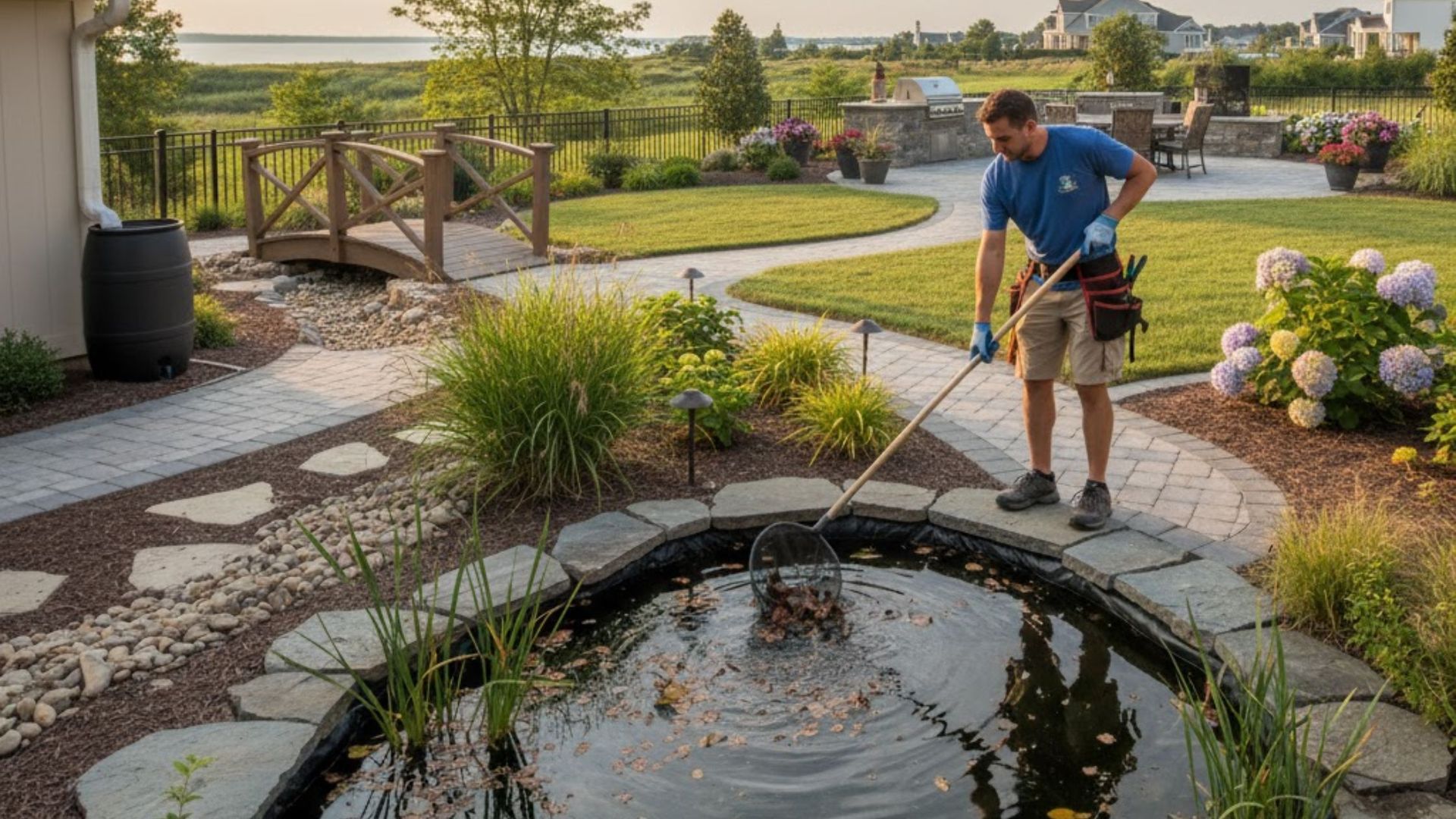What Should You Include in a Mid-Season Irrigation System Inspection in Williamsburg?
As the days grow longer and temperatures climb, the demands on your landscape reach their annual peak, making the mid-season period the most critical time for vigilant irrigation oversight. An automatic sprinkler system is one of the most effective tools for maintaining a healthy lawn and garden, but its efficiency is not static. Over time, components wear, landscapes mature, and water needs shift dramatically with the intense summer heat common in the Virginia area. Neglecting a thorough mid-season inspection can lead to costly water waste, uneven turf growth, and system failures when you need hydration the most.
A detailed inspection moves beyond simply checking if the system turns on. It involves a systematic, zone-by-zone analysis that assesses mechanical integrity, hydraulic performance, and programming accuracy. This proactive maintenance ensures your system is delivering the right amount of water, to the correct location, at the most efficient time of day. For homeowners looking for professional reliability and local expertise, securing an Irrigation Company in Williamsburg, VA is the first step toward safeguarding your landscape's vitality throughout the hottest months.
Why is my sprinkler system suddenly not watering correctly during the summer peak?
The sudden decline in irrigation performance during mid-season is a remarkably common concern, often stemming from a confluence of factors related to physical wear and environmental change. The primary culprit is often an issue that has been developing subtly since the spring startup, but which only becomes noticeable when the turf demands more water to survive the heat. When the lawn requires intensive irrigation, even small deficiencies—like a slight leak or a blocked nozzle—result in visibly stressed areas. This rapid change highlights the necessity of mid-season intervention.
When your system is struggling, the problem can typically be traced back to the mechanical components, pressure dynamics, or the electronic controller. Mechanical issues include broken heads caused by lawn equipment or tree root intrusion into water lines, leading to immediate loss of pressure. Dynamic issues involve changes in the municipal water pressure, which affects the trajectory and reach of spray and rotor heads. Finally, if the controller is still running on spring settings, the system will not compensate for the high evapotranspiration rates of summer. It is essential to address these issues promptly, which is why working with a local Irrigation Company in Williamsburg, VA is so beneficial.
The Foundation of Performance: Analyzing the Control Module
The irrigation controller is the digital brain of your entire system, and its settings must evolve alongside the summer climate. A mid-season check must begin at the controller to ensure the programming reflects the actual needs of the landscape. As the summer progresses, the plant’s need for water typically increases, meaning the original spring run times may be severely inadequate.
The adjustment process involves increasing zone run times or activating a seasonal adjustment percentage, which globally scales all watering durations. For example, if you set your system for a 75% increase in seasonal adjustment in June, you may need to reduce that to 50% by late August as temperatures moderate. This fine-tuning prevents both destructive overwatering and plant-damaging under-watering.
Modern controllers, especially smart irrigation models, use weather data and soil moisture feedback to automate these critical adjustments. These sophisticated units utilize real-time weather feeds to calculate the turf’s water loss rate, known as evapotranspiration (ET). By ensuring your smart controller's Wi-Fi connection is stable and the rain sensor is clean and functional, you guarantee the system can adapt automatically to unexpected rain events or heat spikes. This functionality is key to maximizing water conservation throughout the intense growing months.
A detailed controller functionality test must also include checking the date, time, and day exclusions to ensure no critical watering days are being skipped inadvertently. The backup battery, if present, should also be replaced to maintain programming integrity during short power outages. This small detail prevents the entire schedule from resetting, saving significant time and potential plant stress.
Visual and Mechanical Inspection: Head-to-Head Coverage
The most time-consuming yet essential part of the inspection is visually running every zone of the system to observe the spray patterns and mechanical operation. This process confirms that the water distribution is uniform and that all components are physically intact. Mid-season is when issues like tilted, clogged, or broken sprinkler heads become most apparent, usually presenting as visible dry patches on the lawn.
The concept of head-to-head coverage is paramount to efficient watering. This means that water from one sprinkler head must reach the neighboring sprinkler head in all directions. If you observe any gaps, dry areas, or instances where the spray pattern is severely distorted, immediate mechanical adjustments are required. This ensures every square foot of turf receives the necessary hydration.
A common mid-season task is sprinkler head alignment, which corrects heads knocked out of position by mowers, foot traffic, or soil movement. Even a slight tilt can significantly alter the trajectory and reach of the water stream, leading to over-saturation in one area and dry spots in another. Proper alignment involves ensuring the top of the head is perfectly vertical and level with the turf, guaranteeing the intended radius and arc are maintained.
Key Checks for Sprinkler Heads and Nozzles
- Obstruction Clearance: Inspect for turf growth, mulch, or landscaping features that are now blocking the spray path due to seasonal growth. These obstructions must be cleared or the head height must be raised.
- Nozzle Health: Look closely for misting, streaking, or reduced flow, which are common symptoms of clogged nozzles. Small particles of silt, sand, or mineral deposits can partially block the opening. Cleaning or replacing the nozzle is often a simple but high-impact repair.
- Leak Detection at the Base: While running, check the base of each head for excessive water pooling or bubbling, indicating a leak in the seal or a loose connection to the lateral line. Addressing these small leaks immediately prevents water damage to surrounding soil and minimizes waste.
- Correct Components: Verify that the correct type of nozzle (e.g., matching precipitation rates for a specific zone) is being used. Using mismatched heads in the same zone will inevitably cause uneven watering, where one section is drowned and another is starved.
What is the most effective way to address pressure issues in an irrigation system?
Pressure dynamics are often the silent killer of irrigation efficiency, especially in residential systems where water demand fluctuates greatly throughout the day. High pressure causes misting, which dramatically increases water loss through wind and evaporation, rendering the watering cycle ineffective. Conversely, low pressure results in a shorter spray radius, eliminating the required head-to-head coverage and creating dry spots.
The most effective way to stabilize pressure is through the use of pressure-regulating components, particularly pressure-regulating (PR) sprinkler heads and valve diaphragms. These devices maintain a consistent, optimal water pressure (usually around 30 to 45 PSI, depending on the head type) regardless of the pressure fluctuations coming from the main line. For older systems, installing a master pressure regulator at the point of connection can be a powerful upgrade that protects the entire network.
During a mid-season check, the system’s static and dynamic pressures should be tested using a gauge attached to a hose bib or test port. Observing the flow in each zone—especially the zone farthest from the main supply—can quickly diagnose systemic pressure problems. If a professional notes consistently low pressure across multiple zones, it often points to a major break in the main line or a faulty valve, which requires immediate attention from a specialized service provider. Hampton Roads Irrigation & Landscape provides comprehensive diagnostic services to resolve these hidden hydraulic problems swiftly.
Comprehensive Hydraulic and Plumbing Checks
While the visible elements are easy to inspect, much of an irrigation system's critical infrastructure is buried underground and requires expert knowledge to assess. The mid-season check must include an audit of the primary valves and the backflow prevention device, ensuring system integrity and protecting the drinking water supply. These components are under constant mechanical stress during the peak season.
Inspecting the Valves and Manifolds
Each zone is controlled by a valve, typically housed in a valve box. The technician should manually run each valve to ensure it opens and closes fully and smoothly. A valve that fails to open or close properly can lead to a running zone (major waste) or a dead zone (plant death). Common valve issues include debris obstructing the diaphragm or a failed solenoid coil.
- Solenoid Inspection: The solenoid is the electrical component that triggers the valve. A humming or buzzing sound when the valve should be off indicates a potential electrical fault or a partially stuck solenoid.
- Seepage and Leaks: Open the valve box covers and inspect the surrounding soil. Soggy soil or standing water inside the box indicates internal leaks or loose fittings on the manifold, which must be corrected immediately to prevent soil erosion and water loss.
- Wiring Check: The wiring leading to the solenoids is susceptible to corrosion and damage from pests. Connections should be secure and sealed with waterproof connectors to prevent short circuits that can confuse the controller.
The backflow prevention device is a crucial element required by most municipalities in Williamsburg, VA, to protect the public water system from contamination. While these devices are typically tested annually in the spring, the mid-season check should include a visual inspection for any visible leaks, dripping, or corrosion around the connections. Any signs of physical damage warrant an immediate service call.
How does the Williamsburg climate influence mid-season irrigation strategy?
The specific climate and soil conditions of the Hampton Roads area, including Williamsburg, dictate a unique irrigation approach compared to drier or more temperate regions. Coastal Virginia experiences hot, humid summers punctuated by intense rainfall followed by short periods of localized drought. The soil, often a mix of sandy loam and clay, can have varying water-holding capacities. This variability means a "set it and forget it" mentality will inevitably lead to turf stress.
During the summer, the primary challenge is maximizing water penetration while minimizing surface evaporation and runoff. The high humidity contributes to increased pest and fungal issues like Brown Patch or Dollar Spot, especially if the lawn is watered too frequently or late in the day. The goal of mid-season maintenance is not just to keep the grass green, but to sustain a deep, resilient root system capable of withstanding these stresses.
To foster resilience, we recommend a shift from frequent, shallow watering to deep, infrequent cycles, perfectly timed just before sunrise. This method delivers moisture deep into the root zone, encouraging the grass to develop deeper roots to seek that moisture, making it more drought-tolerant. Deep watering also ensures that the top layer of soil dries out quickly, which inhibits the germination and spread of fungal spores that thrive in persistent surface moisture.
If you are interested in coupling your system with advanced weather-sensing technology, you should explore Efficient Lawn Care with Smart Irrigation in Williamsburg. Integrating smart technology directly addresses the local weather volatility, preventing the system from running needlessly after a heavy afternoon thunderstorm or cranking up the water supply during a sudden heat wave. This technological integration is essential for modern water management in a dynamic climate.
Checking Water Coverage and Uniformity
One of the greatest sources of water waste and lawn damage is non-uniform coverage. This problem is particularly noticeable mid-season when the sun is harshest, as areas receiving inadequate water quickly turn brown and dormant. A systematic check of coverage uniformity is critical to identifying zones that are struggling. This process often involves conducting a catch can test, sometimes affectionately called the "tuna can test."
The catch can test involves placing multiple straight-sided containers randomly throughout an active irrigation zone and running the system for a set amount of time. By measuring the volume collected in each can and calculating the average precipitation rate, you can determine how evenly the water is being distributed. Significant variation between cans indicates a major coverage or pressure imbalance that needs mechanical correction, such as adjusting or replacing specific nozzles.
For landscape beds utilizing drip irrigation—a highly efficient method for trees, shrubs, and gardens—the mid-season check focuses on the drip emitters. Drip systems are highly susceptible to clogging from mineral buildup or debris, which starves the target plant. A comprehensive inspection involves tracing the lines and visually confirming that every emitter is actively dripping water. If flow is restricted, flushing the drip line by removing the end caps is often required to clear the sediment.
Integrating the Brand Name and Expertise
When looking for a detailed, meticulous service plan that accounts for all these mechanical and environmental factors, homeowners consistently turn to Hampton Roads Irrigation & Landscape. Our experienced technicians are specifically trained in the hydraulic and agronomic challenges unique to the coastal Virginia region. We don't just fix what is broken; we optimize the entire system for peak performance and water conservation.
Our focus is on preventive care, ensuring small issues are caught before they escalate into major, expensive repairs or significant landscape loss. This attention to detail is why our customers trust us implicitly with their most valuable outdoor assets. Our commitment to excellence in system diagnostics and maintenance is well-documented by the positive feedback from homeowners throughout the area. To learn more about the quality of our service and customer satisfaction, we invite you to read our reviews from previous clients who value reliable irrigation management.
Addressing Hidden Problems: Leaks and Root Intrusion
Mid-season is often when the subtle, hidden problems caused by underground forces finally manifest themselves as major system deficiencies. Leaks and root intrusion are two of the most damaging issues, as they cause massive water loss and significantly reduce system pressure, often far from where the water is actually supplied. Detecting these problems requires specialized tools and expert observation skills.
A main line leak, even a small one, can drastically lower the overall water pressure available to every sprinkler head downstream. Signs of a main line leak include a spongy or overly green area of turf that is constantly wet, even when the system is off, or the sudden and unexplained appearance of low water pressure in all zones. Professional leak detection often involves pressurizing the lines and using listening equipment to pinpoint the exact location of the break underground, minimizing the excavation required for repair.
Root intrusion is particularly common in established Williamsburg landscapes featuring mature oak, maple, and pine trees. Tree roots are opportunistic and will often grow around or even through the non-rigid plastic piping used for lateral lines, causing crimping or cracking. When a pipe is crimped, the flow is reduced dramatically, resulting in a dead zone or severe pressure imbalance. Repairing root intrusion damage often requires rerouting the line away from the aggressive root system and installing stronger, more root-resistant piping materials.
Seasonal Programming Adjustments for Deep Root Health
The key to long-term lawn health is ensuring the irrigation schedule supports deep root growth. In mid-season, this means adapting the run times to meet the higher evaporative demand while still maintaining those deep, less frequent soakings. The crucial concept here is the "soak and cycle" method, which is indispensable for clay-heavy soils or sloped areas common in the region.
The soak and cycle approach breaks a long watering cycle (e.g., 30 minutes) into multiple, shorter segments (e.g., three 10-minute cycles) separated by a brief one-hour pause. This pause allows the water to soak into the ground before the next cycle begins, preventing surface runoff, which is a major source of water waste. Without this method, water often pools on the surface and runs off into the street, leaving the soil beneath thirsty.
For specialized planting beds, like those featuring drought-tolerant native plants or vulnerable annual flowers, the run times must be segregated into specific zones. This process, known as hydrozoning, involves grouping plants with similar water needs onto the same zone. This prevents the turf, which needs deep watering, from drowning the garden, which often requires only light, precise hydration from a drip system.
The Role of Ground Sensors and Monitoring
To remove the guesswork from seasonal programming, many homeowners are now upgrading to systems that feature soil moisture sensors. These small probes are buried in the lawn’s root zone and communicate directly with the irrigation controller. They instruct the system to skip a scheduled cycle if the soil already retains sufficient moisture, even if no rain has fallen recently. This is an advanced level of water management that far surpasses traditional time-based scheduling.
A mid-season inspection should include checking the calibration and functionality of these sensors. Ensuring they are placed correctly within the active root area and that their connectivity is strong is vital for their accuracy. Proper sensor function dramatically reduces water consumption by preventing unnecessary watering cycles, especially during the intermittent rainy periods Virginia often experiences in the summer months. To explore how your property can benefit from these modern technologies, we encourage you to contact us directly for a personalized consultation and system audit.
Essential Maintenance Checklist for Maximum Efficiency
Achieving peak efficiency in the mid-season requires a commitment to a detailed, systematic checklist that addresses the entire system, from the power source to the point of water application. Every step is designed to minimize waste and maximize the health of your lawn, flower beds, and mature trees. A professional inspection ensures no critical detail is overlooked during this intensive maintenance period.
- Zone Activation and Observation: Manually run every single zone in sequence. Walk through each zone, watching for any spray pattern anomalies, misaligned heads, or signs of restricted flow.
- Cleaning Filters: If your system includes a main line filter or individual filters in the sprinkler body, they must be removed and cleaned. Clogged filters are a major cause of pressure loss and uneven watering.
- Mower Damage Audit: Inspect all heads along hardscapes and driveways for physical damage caused by lawnmowers or string trimmers. Replace any cracked casings or broken pop-up risers.
- Checking the Main Line: Listen carefully near the main line connection and at valve boxes for any hissing sounds, which can indicate a steady, small leak, even if the system is not actively running.
- Backflow Device Integrity: Verify the backflow device is dry and shows no signs of active leakage, protecting your potable water supply.
- System Lubrication: For older or stubborn rotor heads, applying a small amount of silicone lubricant to the rotation mechanism can restore smooth operation and full-arc coverage.
By following this comprehensive approach, homeowners can significantly extend the lifespan of their irrigation system and keep their landscape looking pristine and healthy throughout the most stressful part of the year. This detailed, hands-on maintenance is the hallmark of the quality service provided by Hampton Roads Irrigation & Landscape, ensuring your system is running at its absolute best when it matters most.
FAQs About Mid-Season Irrigation Maintenance
What is the ideal time of day to water my lawn in Williamsburg during the summer?
The optimal time to run your irrigation system is in the early morning, typically between 2:00 AM and 6:00 AM. Watering during this window minimizes evaporation caused by the sun and wind, allowing the maximum amount of water to reach the root zone. Furthermore, having the turf dry out before midday heat helps to suppress fungal diseases that thrive in prolonged damp conditions, which is crucial in the humid Virginia climate.
Should I change the watering schedule if I notice dry patches of grass?
Yes, if you observe dry patches, it is a clear indication that water distribution is uneven or insufficient. Before immediately increasing the total run time for the entire zone, you should inspect the area for mechanical failure. Dry patches are often caused by a single clogged nozzle, a misaligned head, or a pressurized leak that is stealing water flow. Once the mechanical fault is corrected, re-evaluate the watering duration.
How often should I visually check my irrigation system during the summer?
A full, manual system check should be performed at least once a month during the active growing season (mid-spring to early fall). However, a quick visual inspection should be performed weekly or immediately following any significant event, such as a major storm, heavy lawn mowing, or unusual heavy equipment traffic near the buried lines. Consistent, brief observation is the key to preventing minor issues from becoming catastrophic.
What is "hydrozoning," and why is it important for my yard?
Hydrozoning is the practice of grouping plants with similar water needs into the same irrigation zone. This is essential because turfgrass, garden beds, and foundation plantings all have drastically different water requirements. By separating them, you ensure that high-demand areas receive the deep, restorative watering they need without drowning low-demand shrubs or native species. This practice vastly improves landscape health and water efficiency.
Does excessive misting from a sprinkler head mean I have too much pressure?
Yes, misting is a definitive sign of excessively high water pressure in that zone. When water is atomized into a fine mist, much of it is lost to wind drift or rapid evaporation before it even hits the ground. To solve this, you need to either install a pressure regulator on the affected valve or replace the existing sprinkler heads with pressure-regulating (PR) models, which maintain a consistent, efficient spray pattern.
Conclusion: Securing Your Investment Through Expert Care
The mid-season irrigation inspection is far more than a simple tune-up; it is a vital, systematic audit that preserves your investment in your landscape and protects you from unnecessary water expenditure. By meticulously checking the controller's logic, optimizing coverage through sprinkler head alignment, stabilizing pressure, and addressing hidden leaks, you ensure your system is perfectly calibrated for the intense demands of the summer months.
The complexity of these systems, coupled with the unique soil and climatic conditions of the region, makes professional oversight highly advantageous.
Hampton Roads Irrigation & Landscape remains the trusted partner for homeowners dedicated to sustainability and the health of their property. We provide the expertise, tools, and local knowledge required to keep your lawn thriving year-round. For unparalleled maintenance and long-term peace of mind regarding your irrigation investment, look no further than the leading
Irrigation Company in Williamsburg, VA.
